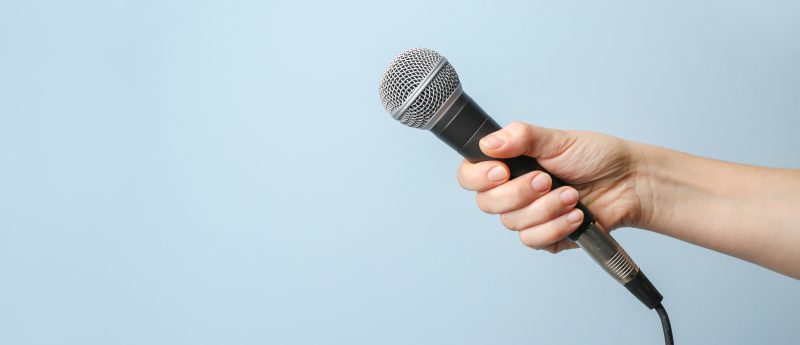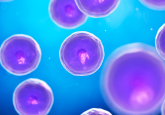Recent developments in flow cytometry analyzers and cell sorters

Reiner Schulte is the Head of Flow Cytometry at the Cambridge Institute for Medical Research (UK). Previously, Reiner graduated with an MSc in molecular biology and biochemistry from the University of Jena (Germany), and a PhD in immunology from the University of Goettingen (Germany). He then worked as a postdoctoral researcher at the German Primate Centre (Göttingen, Germany) in the unit of infection models where his research focussed on vaccine development and polychromatic flow cytometry. He then moved on to work as a Senior Scientific Officer in the flow cytometry core facility at the Cancer Research UK Cambridge Institute before taking on his current role.
Flow cytometry, the technology of analyzing and/or separating single cells illuminated by laser light and running in a stream of liquid, has seen a massive change over the last decade. During my PhD I started using flow cytometry on a two-laser analyzer with four fluorescent detectors. When our lab got a three-laser system with 12 fluorescent detectors, I got excited about this – at that time – state-of-the-art machine. Fast forward 15 years and I am now running a flow cytometry core facility at the Cambridge Institute for Medical Research (UK) and one important part of my job is to provide the right instruments for a multi-user facility in the academic environment.
In this Spotlight, I would like to look into the market of flow cytometry analyzers and cell sorters and highlight some interesting developments in the field of flow cytometry. Years ago, only a handful of companies provided flow cytometry equipment but now you have dozens of companies and some choice of instruments. This makes the approach of choosing the right instrument quite a challenge.
If you are looking for a simple flow analyzer which I define as an instrument with up to three lasers, you will need to ask yourself, what type of assay do you want to run on the machine, how fast should it be, do you want to be able to run multiwell plates, do you want to be able to upgrade the system?
Depending on your answers, you can choose from a wide variety of instruments catering for your needs and budgets. If you are interested in acquiring a simple analyzer, make sure that you don’t just rely on company information but organize a demo of the instrument of interest.
Despite more companies providing systems, simple flow analyzers have not changed much over the years. However, one recent improvement for the analysis of rare cells is the development of acoustic-assisted hydrodynamic focussing of cells (Thermo Fisher Attune NxT). In classical flow cytometers, particles are aligned by injecting them into a column of sheath fluid. This results in hydrodynamically aligning the cells and guiding them through the flow cell. The acoustic-assisted hydrodynamic focussing uses an additional standing acoustic wave to align the cells. In consequence, flow rates can be much higher without losing resolution which is particularly useful for rare cell or cell cycle analysis.
The high-end range of flow cytometers has also expanded. You can now buy instruments that can house up to 30 fluorescent detectors (BD FACSymphony, Bio-Rad ZE5 Cell Analyzer). With these settings, designing and testing your fluorescent dye combination is paramount. Using so many colors means that you will need to determine how much a dye spills into different channels (compensation matrix) but also check the system for loss of sensitivity due to the high number of different channels (spreading matrix).
A different approach for multi-parameter flow cytometry emerged in the last few years in the form of spectral analyzers from Sony Biotechnology (CA, USA) and Cytek (CA, USA). These systems record the whole emission spectra of a fluorescent dye on detector arrays and perform spectral unmixing known from fluorescent microscopy. This technology allows the analysis of more fluorescent dyes per laser and to separate fluorophores that have very similar emission spectra.
An alternative technology to labeling cells with fluorescent dyes is the use of metal tags. The mass cytometry technology (Fluidigm Helios) allows measuring over 40 markers simultaneously. Cells are labeled with antibodies conjugated to metal isotopes and are separated according to their mass using inductively coupled plasma time-of-flight mass spectrometry (ICP-TOF-MS) technology. The resulting data is compatible with the flow cytometry standard (FCS) and can be analyzed and presented in traditional flow plots.
The field of imaging cytometry has also seen very interesting developments over the last few years. For a long time the ImageStream® from Amnis (WA, USA) and Luminex (TX, USA) has been leading the field. This system collects brightfield and darkfield images of cells together with up to 12 fluorescent channels and thereby combines the benefits of fluorescent microscopy with the statistical power of flow cytometry.
The newest improvement in the field of imaging cytometry is the combination of a mass cytometer with an imaging unit (Fluidigm Hyperion). Formalin-fixed or frozen tissue can be stained with metal tags and then analyzed thus allowing recording of the spatial information of cells together with multi-parametric analysis.
A similar technology is called Multiplexed Ion Beam Imaging (MIBI) which can visualize over 40 markers with sub-cellular resolution simultaneously. Another new development in imaging cytometry is the development of the CO-Detection by indEXing (CODEX) technology that uses an antibody conjugated to barcodes, comprised of a unique oligonucleotide sequence.
The market for cell sorters has seen some changes over the last years as well. There are two main trends: the first is the development of simple to use instruments. You can now buy two- or four-way cell sorters like the BD Melody, the S3™ from Bio-Rad or the SH800 from Sony that are highly automated and can be used without much background knowledge of flow cytometry.
The second area is the commercial availability of closed sorting systems like the MACSQuant® Tyto® from Miltenyi Biotec (Bergisch Gladbach, Germany). This system allows sorting of cells without generation of aerosol therefore not causing any biosafety concerns. There are more companies developing this technology, with one interesting system coming from Cellular Highways who are developing a microfluidic sorter based on an inertial vortex created by a thermal vapour bubble. This technology can to be highly multiplexed to increase the number of sorted cells dramatically.
An area of great interest is unfortunately still underdeveloped: to my knowledge there is no imaging cell sorter available. Combining an imaging flow cytometer with a sorting unit should enable researchers to perform interesting experiments. It would be very useful to be able to sort cells according to the location of fluorescence within the cell. Current systems are not capable of performing this type of experiment.
All these developments of high-parametric instruments highlight a serious bottleneck which still remains in the area of flow cytometric data analysis.
Low-parameter flow cytometric data can be analyzed manually without major caveats. The difficulties arise once multi-parameter flow data is generated, as the number of combinations increase by 2n (with n being the number of parameters). Even though dimensionality reduction algorithms and plots have become common in flow cytometry publications, no commercial analysis platform exists that allows this analysis to be performed easily. Software like FlowJo or FCS Express have started using R-based plugins to help with the data analysis. Open source software are available as well (e.g. Bioconductor), and many labs are developing bioinformatics tools for the analysis of their flow cytometry data.
Despite all these efforts, a scientist starting to analyze multi-dimensional flow data currently needs to invest significant time and effort, and my hope is that future developments will make this easier.
To keep up to date with the developments in the field of flow cytometry, I highly recommend regularly checking the website of the International Society for the Advancement of Cytometry (ISAC) and to attend its yearly CYTO conference.
Our expert opinion collection provides you with in-depth articles written by authors from across the field of bioanalysis. Our expert opinions are perfect for those wanting a comprehensive, written review of a topic or looking for perspective pieces from our regular contributors.
See an article that catches your eye? Read any of our articles below for free.







